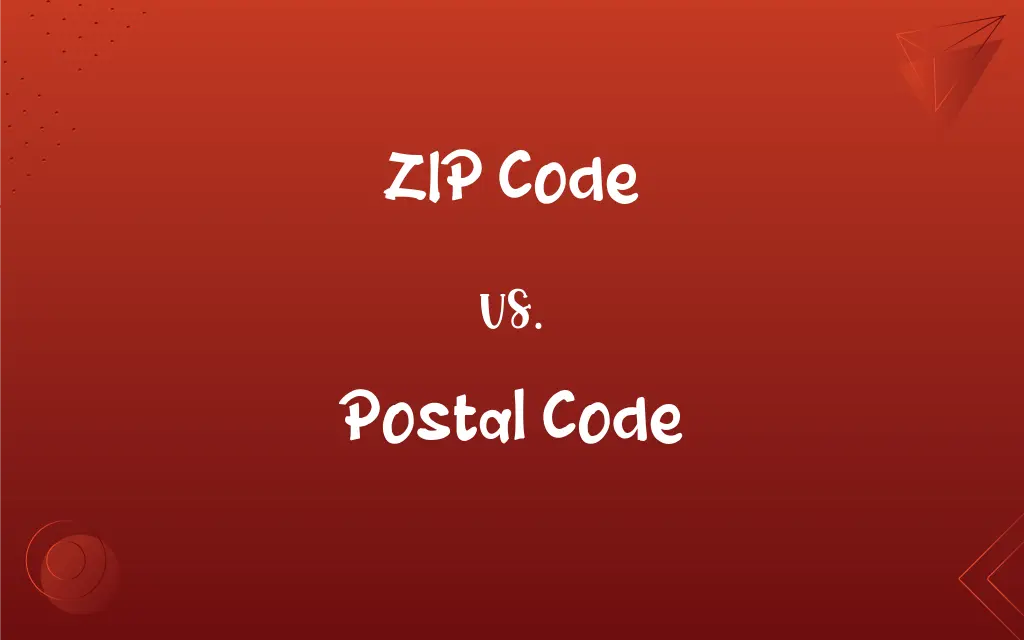Postal Code vs Zip Code: Key Differences Explained

Do you know the difference between postal and zip codes? Though they serve similar purposes, the terms ‘zip code’ and ‘postal code’ often refer to different systems depending on where you are in the world. This article will help you navigate the meaning and structure of postal and zip codes, as well as how they affect mailing efficiency.
What is Postal Code vs Zip Code?
The main difference between postal and zip codes lies in terminology and usage. A postal code refers to the alphanumeric code used in many countries to aid the sorting and delivery of mail. It can consist of numbers, letters, or a combination of both. On the other hand, a zip code is a specific type of postal code used in the United States, designed to improve the efficiency of mail delivery.
Meaning of Zip and Postal Code
The meaning of zip and postal code essentially boils down to their function: both serve as an identification system to streamline mail delivery. Postal codes are used worldwide, while zip codes are a subset of postal codes used in the U.S.
Example:
- A postal code in Canada might look like “K1A 0B1”, which includes both numbers and letters.
- A zip code in the U.S. looks like “90210”, consisting solely of digits.
Key Differences Between Postal and Zip Code
1. Geographical Difference
- Zip Code: The term “zip code” is primarily used in the United States and refers specifically to a system introduced by the U.S. Postal Service in 1963. The zip code helps to direct mail more accurately to its destination.
- Postal Code: This is the more universal term used around the world, including in countries like Canada, the UK, and Australia. While similar to zip codes in function, postal codes may look different and may have additional or fewer characters depending on the country.
2. Structure and Format
- Zip Code Format: In the U.S., zip codes typically consist of five digits, although the nine-digit zip code (ZIP+4) is also common. The nine-digit zip code includes the base five-digit code, followed by a hyphen and four extra digits to identify a more specific delivery area.
- Postal Code Format: Internationally, postal codes vary. For example, the postal code for the UK consists of a combination of letters and numbers, such as “SW1A 1AA”, while the postal code for Nigeria could be something like “110001”.
3. Country-Specific Variations
- Zip and Postal Code for Nigeria: In Nigeria, the postal code system is a bit different. It includes a six-digit number used to identify specific regions, such as “110001” for a location in Abuja. This demonstrates how the zip and postal code for Nigeria differ from those used in the U.S. and UK.
Are Zip Codes and Postcodes the Same?
Although the terms “zip codes” and “postcodes” are often used interchangeably, they are not the same. The term “postcode” is more common in countries like the UK and Australia, whereas “zip code” refers specifically to the U.S. system. However, their purpose remains the same: to facilitate the sorting and delivery of mail efficiently.
How Does a Zip Code Look Like?
In the U.S., a zip code typically consists of five digits (e.g., “90210”). The addition of the ZIP+4 code (nine digits) further specifies the destination, making delivery more accurate.
Example:
- Five-digit Zip Code: 90210
- Nine-digit Zip Code: 90210-1234
How Does a Postal Code Look Like?
The format for postal codes varies widely by country. Some countries, such as the UK, have alphanumeric codes that combine letters and numbers (e.g., “SW1A 1AA”), while others may use just digits, like Canada’s postal codes, which follow the “A1A 1A1” format.
Example:
- Canada Postal Code: K1A 0B1
- UK Postal Code: SW1A 1AA
Postal Code vs Zip Code: A Global Perspective
While in the U.S., zip codes are often the go-to term, in countries like the UK, Canada, and Australia, the term postal code is widely used. This can lead to confusion when talking to someone from a different country, as they may be unfamiliar with the concept of a zip code.
Is Postal the Same as Zip Code?
No, postal code and zip code are not the same, though they serve the same function. Zip code refers specifically to the U.S. system, whereas postal code is used internationally. However, the systems are similar in that both are designed to improve mail sorting and delivery.
Difference Between Zip Code and Post Code
The difference between zip code and post code comes down to regional variations in terminology. In many cases, a postal code is used worldwide, while zip code is a term primarily used in the United States. Post codes in other countries often include both letters and numbers, while zip codes in the U.S. are numeric, though zip+4 codes add extra digits for more precise delivery.
Difference Between 5 and 9 Digit Zip Code
One of the key differences between 5 and 9 digit zip codes is the level of specificity. A five-digit zip code covers a larger area, while the nine-digit zip code (ZIP+4) provides more precise details, such as a specific building, apartment, or region, enhancing the efficiency of the delivery process.
Example:
- Five-digit Zip Code: 90210 (covers a large area)
- Nine-digit Zip Code: 90210-1234 (specifies a particular building or block)
Is Postal Address Same as Postal Code?
The postal address refers to the entire address used to send mail, which includes elements like the street name, city, state, and postal or zip code. The postal code, however, refers specifically to the alphanumeric or numeric code that identifies the delivery area within the postal system.
Conclusion: Postal Code vs Zip Code
To sum up, the difference between postal and zip codes is mainly a matter of terminology and regional usage. While zip codes are specific to the United States, postal codes are the global standard used across many countries. Knowing the format and variations—like the 5 and 9 digit zip codes—can help you navigate mailing systems both locally and internationally.
Article updated 1 month ago ago. Content is written and modified by multiple authors.









